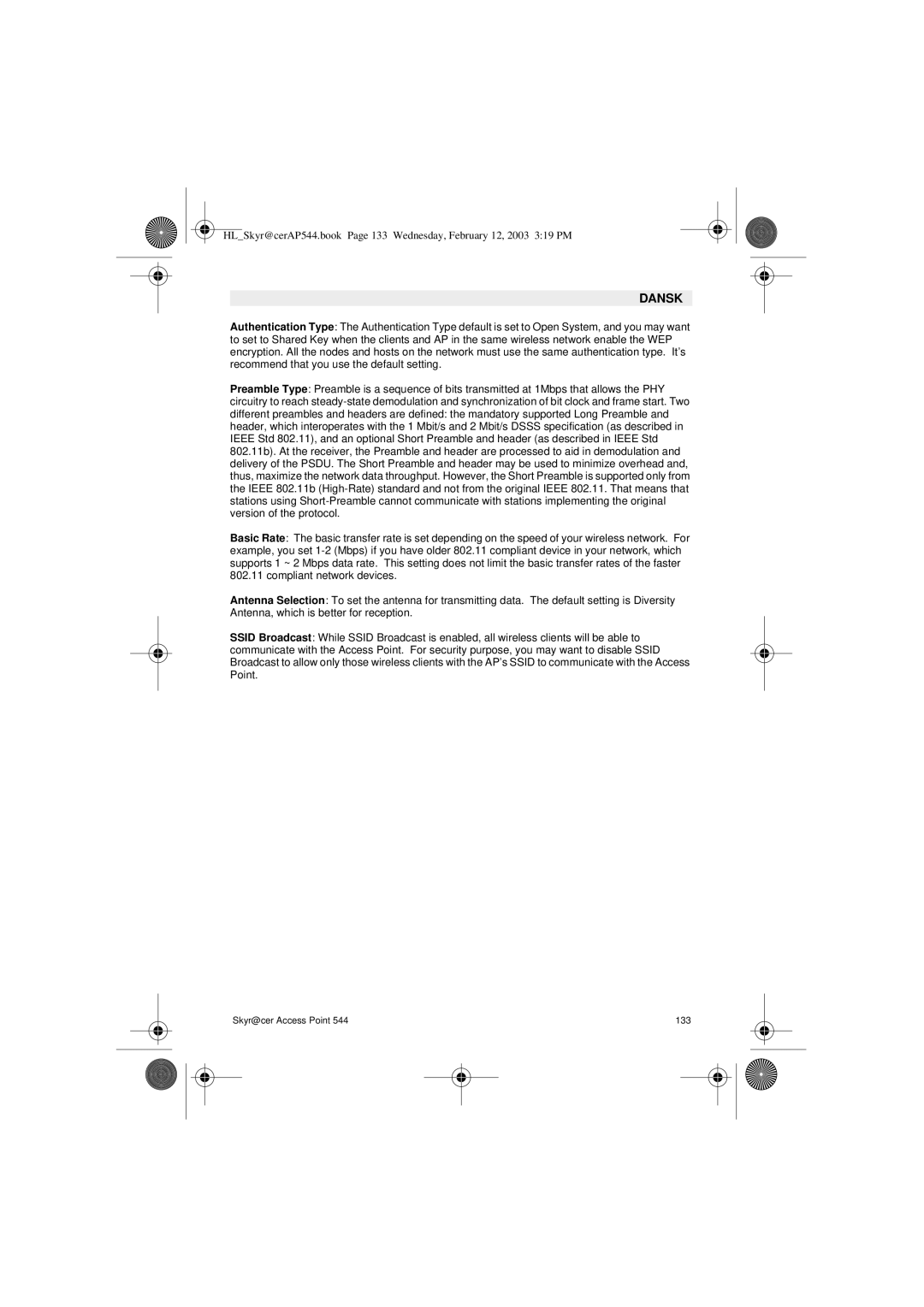
HL_Skyr@cerAP544.book Page 133 Wednesday, February 12, 2003 3:19 PM
DANSK
Authentication Type: The Authentication Type default is set to Open System, and you may want to set to Shared Key when the clients and AP in the same wireless network enable the WEP encryption. All the nodes and hosts on the network must use the same authentication type. It’s recommend that you use the default setting.
Preamble Type: Preamble is a sequence of bits transmitted at 1Mbps that allows the PHY circuitry to reach
Basic Rate: The basic transfer rate is set depending on the speed of your wireless network. For example, you set
Antenna Selection: To set the antenna for transmitting data. The default setting is Diversity Antenna, which is better for reception.
SSID Broadcast: While SSID Broadcast is enabled, all wireless clients will be able to communicate with the Access Point. For security purpose, you may want to disable SSID Broadcast to allow only those wireless clients with the AP’s SSID to communicate with the Access Point.
Skyr@cer Access Point 544 | 133 |
